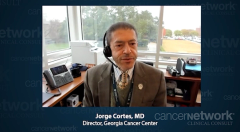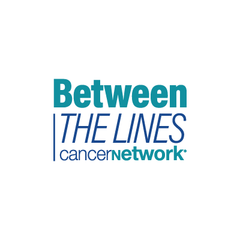
Patient Selection and Dosing of Ponatinib
Jorge E. Cortes, MD and Hagop Kantarjian, MD debate optimal dosing and discuss how they use ponatinib in patients with CML.
Episodes in this series

Transcript:
Jorge E. Cortes, MD: There’s no question that this study shows that ponatinib is a good drug, and even at 30 mg we get good responses. If nothing else, this study shows us that it opens our possibilities because you can make your selection based on the patients, and perhaps on the patients with the greatest constellation of risk factors for arterial occlusive events. Perhaps for older patients, I would consider 30 mg. I see for example, the difference in the patients who have other mutations, going from a 56% response rate to a 40% response rate, that is to me a sizeable difference. You emphasize the survival benefit, or the lack of survival benefit, and that’s an important consideration. It’s good that all of these survivals are very good. With that relatively small difference, I wouldn’t expect to see a survival benefit this soon.
Back to the IRIS study, there’s a huge difference in response rate between imatinib and interferon. It took 10 years to see a survival benefit. That’s front line, there’s crossover, there are many other mitigating factors there. The bottom line is that for these patients, it’s going to take a lot longer to see a survival benefit. And I would consider this. Would I use 45 mg for every patient who doesn’t have a T315I mutation? Would I give everybody 45 mg? No, perhaps not. Perhaps for the patients who have had a better response to prior TKIs [tyrosine kinase inhibitors], who have high comorbidities, in those patients, I would consider 30 mg. Still, today for most of my patients, I do use 45 mg daily. The risk is low enough that I still consider that as a good option. We will see what happens with the long-term follow-up. I would expect that we will see if that progression-free survival, a curve that’s starting to open, if that continues to show that differential, or if it’s a fluke because as you said there are few observations at that point. I like the fact that by 1 year I’m using less of the drug, that’s not a bad thing.
Hagop Kantarjian, MD: I would like to get to 2 points you mentioned. The first one is the analogy to the IRIS trial, which I think is not a good analogy because as you know, in the IRIS trial, all patients on interferon crossed over after only 9 months to imatinib therapy. That’s why even at 10 years there’s no survival difference. The survival difference is 4% or 5% at 10 years, and it’s not significant. That’s not a good analogy. The analogy that pertains is all the randomized studies that compare a second-generation TKI to imatinib. As you remember all the CML [chronic myeloid leukemia] experts said the second-generation TKIs are better because all the surrogate end points for survival are better, CR [complete response], CMR [cardiovascular magnetic resonance imaging], and so on. In the long run we must see a survival difference. I remember Dr [Moshe] Talpaz, [MD,] saying, “This is too early, the follow-up is short; we’ll see a survival difference.” We never saw a survival difference because the salvage therapy on the patients who received imatinib was highly effective. It nullified any potential survival benefit. This is what might happen in the study, that the patients are responding well, and in the long run we are not going to see a survival benefit because the patients who fail will get allogeneic transplant or some of the newer third-generation TKIs, like HQP1351, or some of the others that may be available.
Transcript edited for clarity.
Newsletter
Stay up to date on recent advances in the multidisciplinary approach to cancer.



















































































